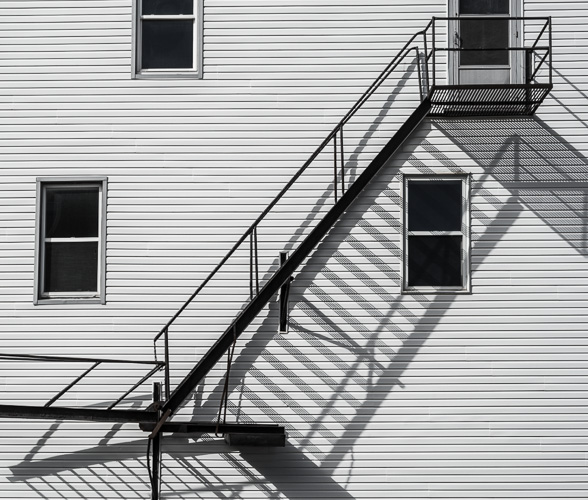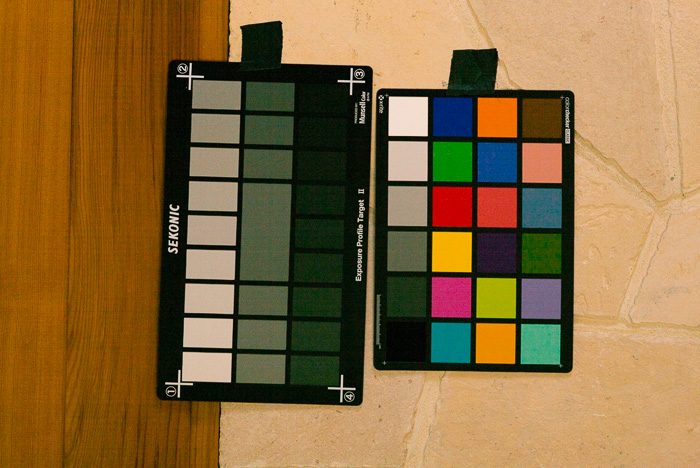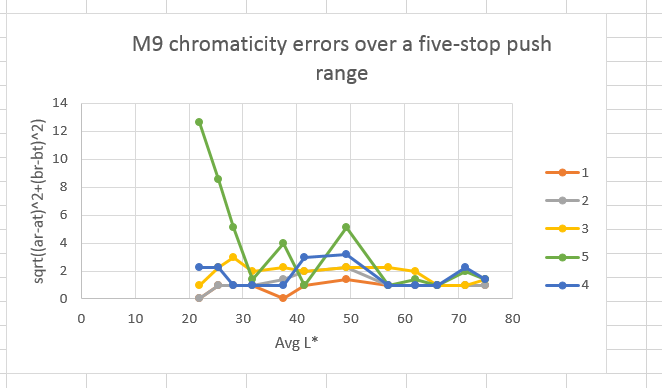I’ve been on a 17-day trip to Canada. Boston to Montreal by car, Montreal to Gloucester, Mass by boat, with stops at Québec City, Gaspe, Prince Edward Island, several places in Nova Scotia, and Campobello Island. Trying to keep my travel weight down, I took an M240 and no SLR. Fire Escape, Summerside, Prince Edward… [Read More]
Leica M240 with a cc30M filter
I thought maybe I had a solution to the Leica M240 green shadows problem. I figured, if it is a result of the M240’s nonlinearity in dark tones, then I could put a filter on the lens so that the green channel didn’t outweigh the other two. If they all rolled off together, the darks… [Read More]
Leica M240 green shadows, color checker measurements
I have the measurements from the images in the post immediately preceding this one. Same regime as with the Leica M9 images posted earlier, but with the Leica M240. I made an ETTR image at ISO 640. Then I made five more images, each one stop more underexposed than the previous one. I left the… [Read More]
Leica M240 green shadows, color checker images
Are you one of those people who are always skipping ahead in the handouts while the presenter is slogging through her PowerPoint slides? Well, this post is for you. Normally, I present the numbers and then the images to back them up. However, there seems to be some interest in this topic, so I’m going… [Read More]
Does pushing in Lr affect white balance?
I took the data from the preceding post, and analyzed the chromaticity errors, which I defined at the square root of the sum of the difference between the a* and b* values of the unpushed and the pushed image. Here’s what I got, plotted, as before, against, the luminance of the test patches: Except for… [Read More]
- « Previous Page
- 1
- …
- 455
- 456
- 457
- 458
- 459
- …
- 574
- Next Page »


